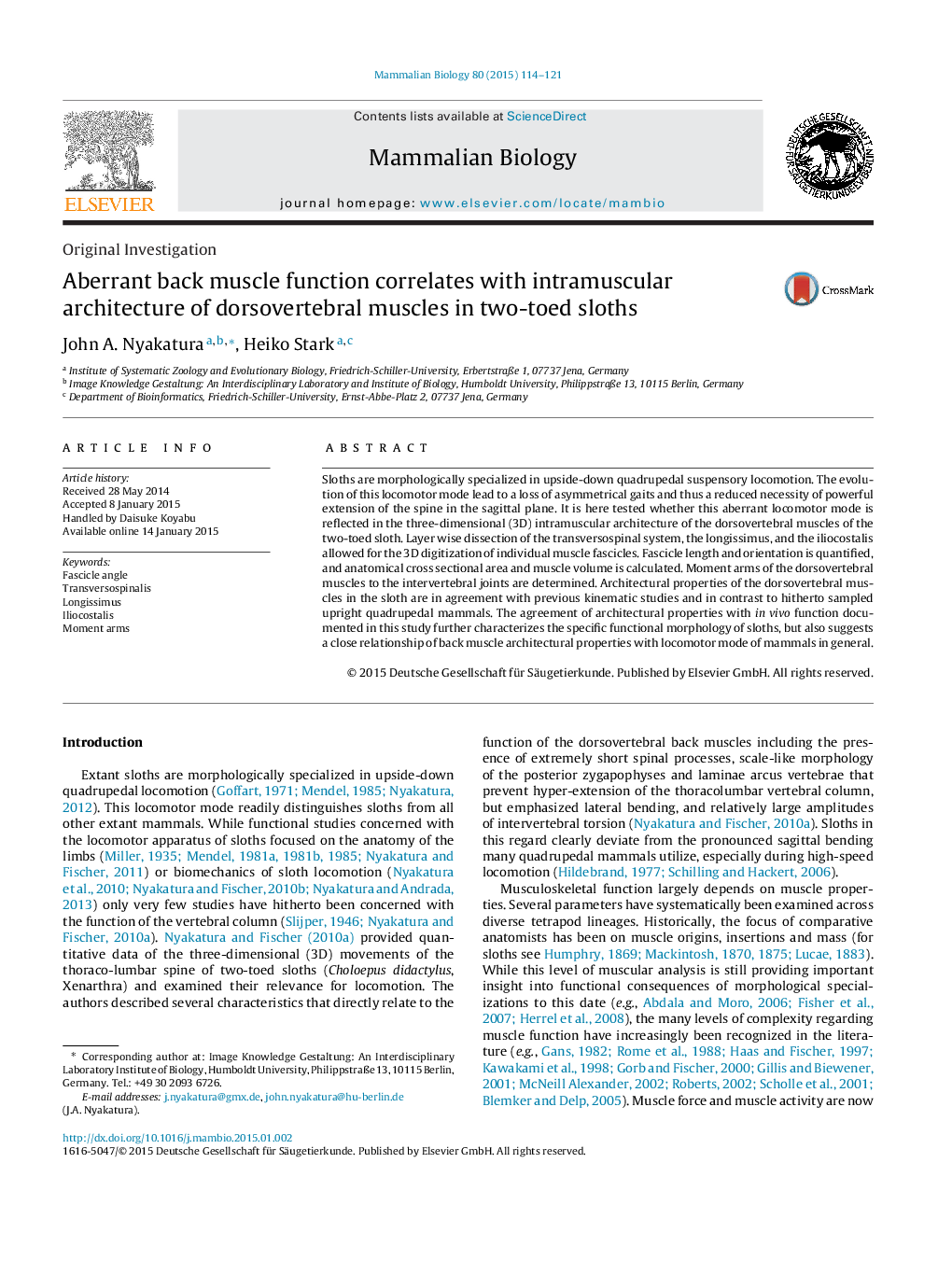| Article ID | Journal | Published Year | Pages | File Type |
|---|---|---|---|---|
| 2193602 | Mammalian Biology - Zeitschrift für Säugetierkunde | 2015 | 8 Pages |
Sloths are morphologically specialized in upside-down quadrupedal suspensory locomotion. The evolution of this locomotor mode lead to a loss of asymmetrical gaits and thus a reduced necessity of powerful extension of the spine in the sagittal plane. It is here tested whether this aberrant locomotor mode is reflected in the three-dimensional (3D) intramuscular architecture of the dorsovertebral muscles of the two-toed sloth. Layer wise dissection of the transversospinal system, the longissimus, and the iliocostalis allowed for the 3D digitization of individual muscle fascicles. Fascicle length and orientation is quantified, and anatomical cross sectional area and muscle volume is calculated. Moment arms of the dorsovertebral muscles to the intervertebral joints are determined. Architectural properties of the dorsovertebral muscles in the sloth are in agreement with previous kinematic studies and in contrast to hitherto sampled upright quadrupedal mammals. The agreement of architectural properties with in vivo function documented in this study further characterizes the specific functional morphology of sloths, but also suggests a close relationship of back muscle architectural properties with locomotor mode of mammals in general.
